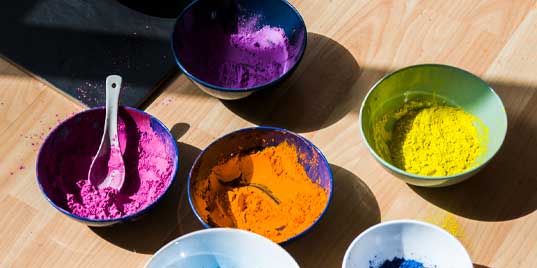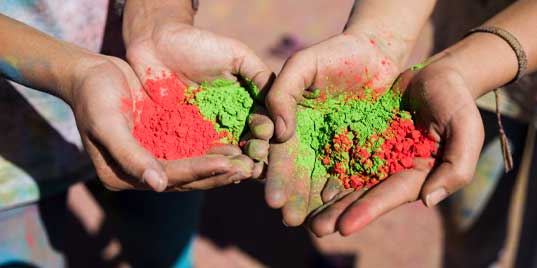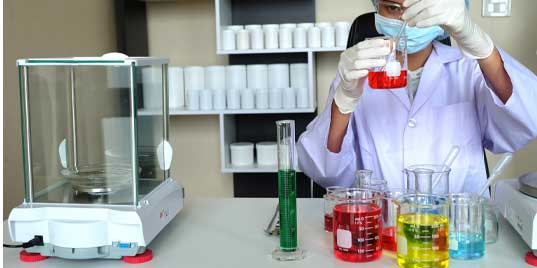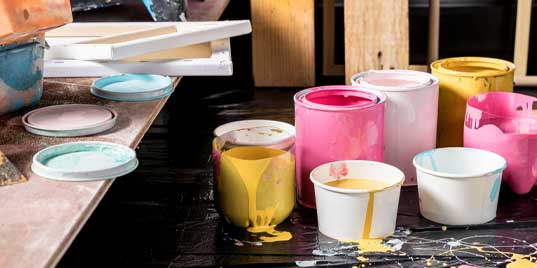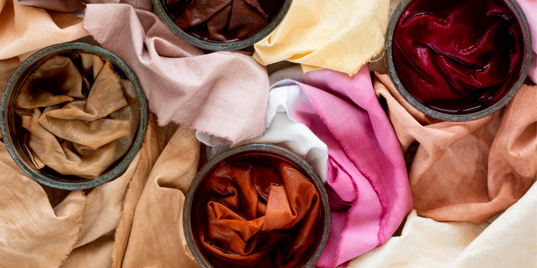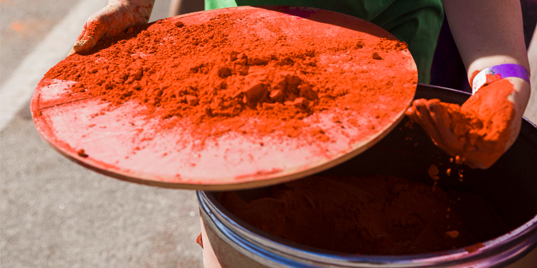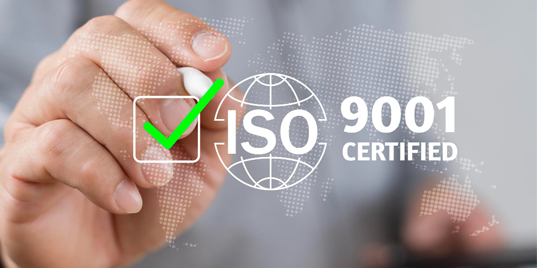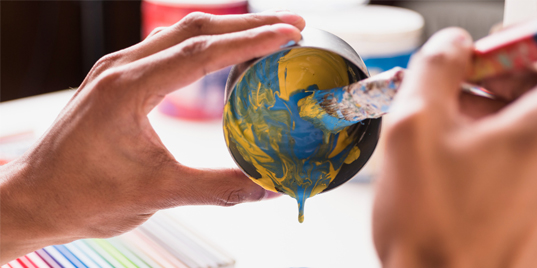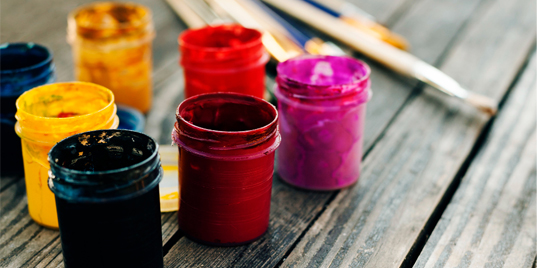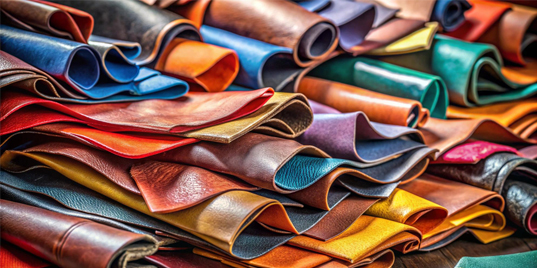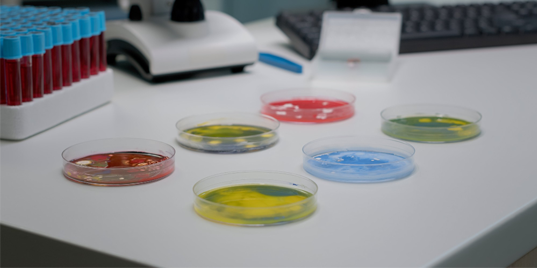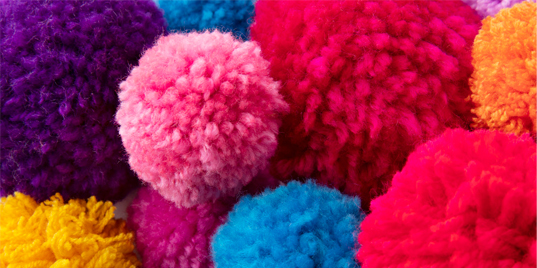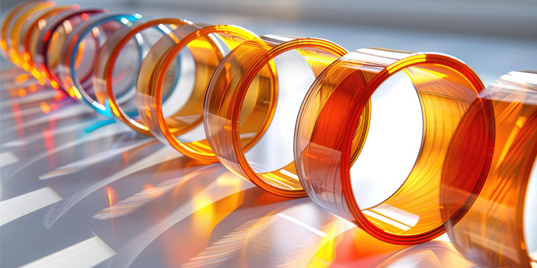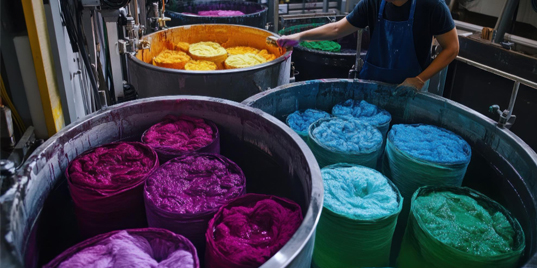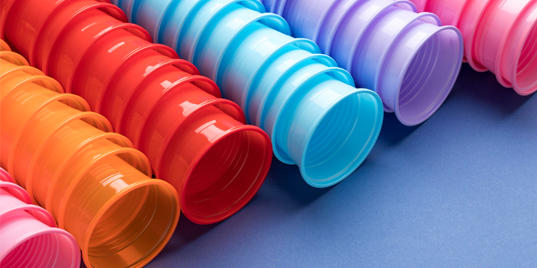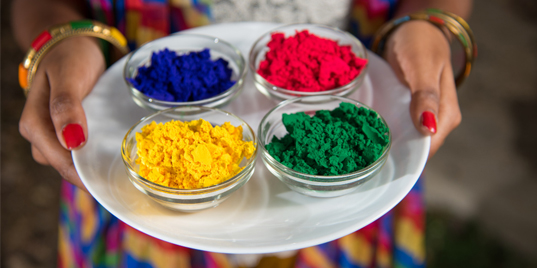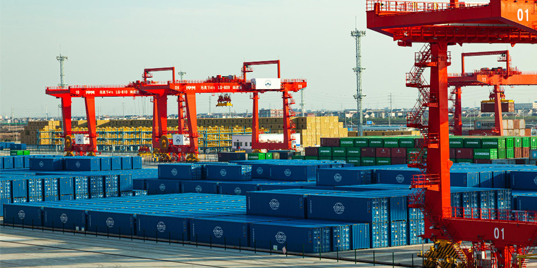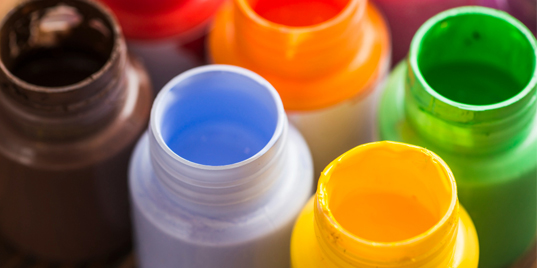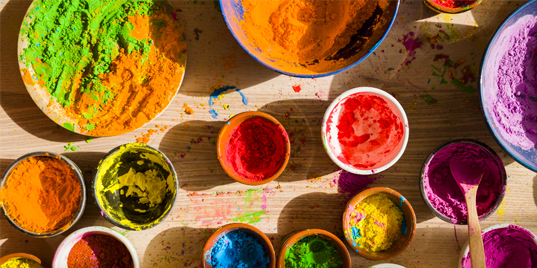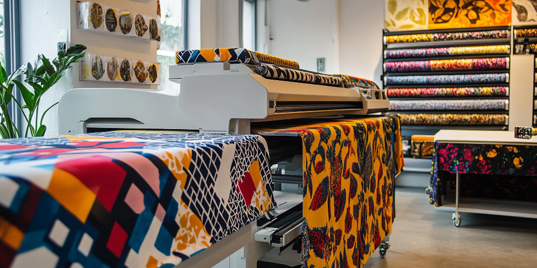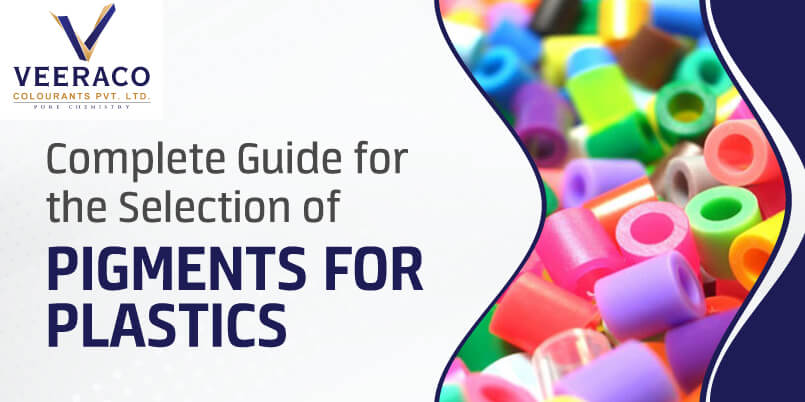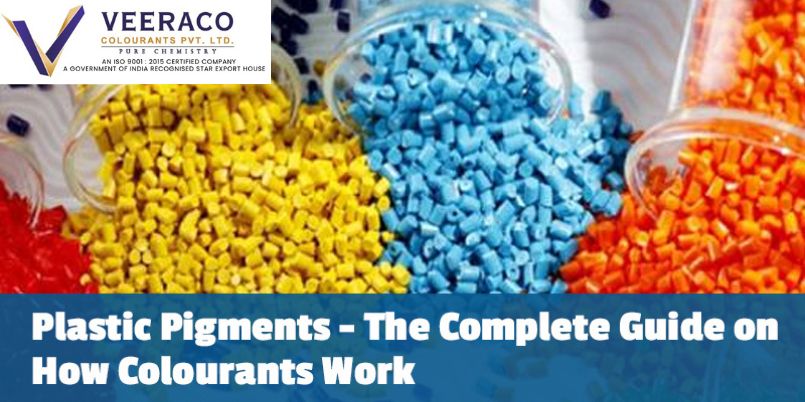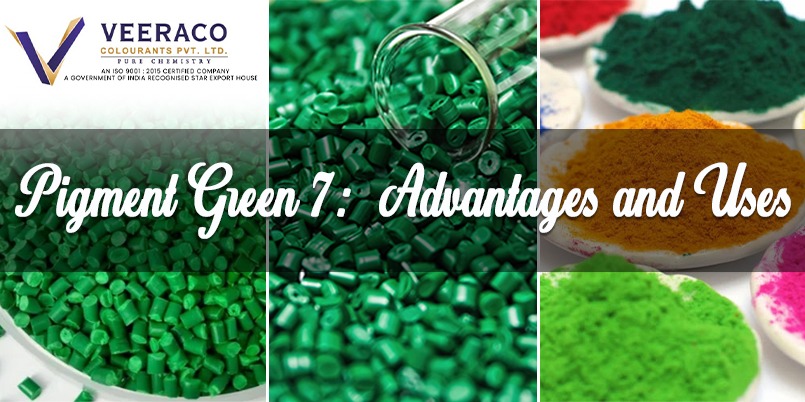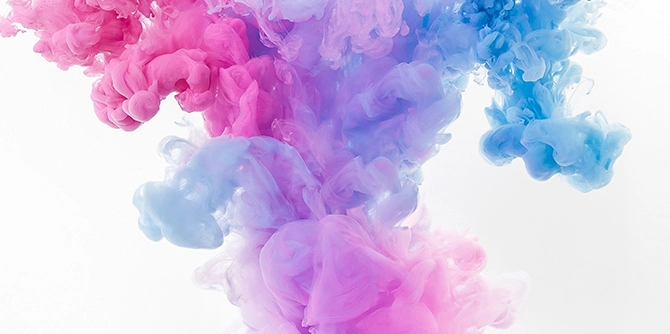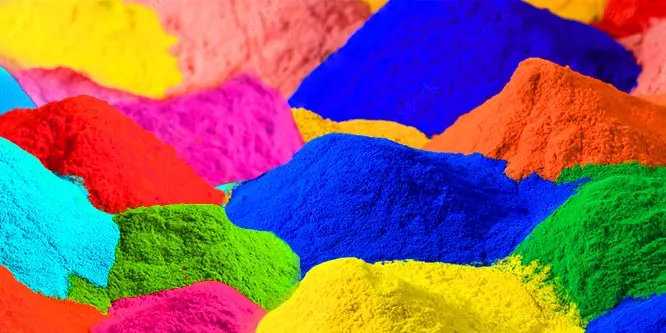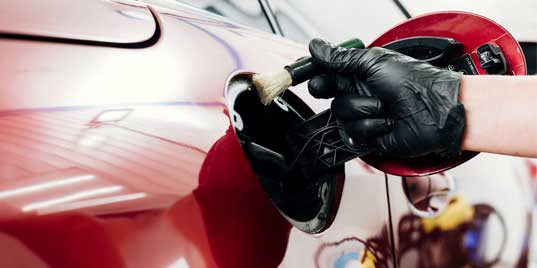
Automotive Paint Pigments: Meeting OEM Standards in 2025
- Admin
- Sep 24, 2025
Automotive Paint Pigments: Meeting OEM Standards in 2025
Automotive coatings demand the highest-performance pigments available in the paint industry. From vibrant metallic finishes to deep solid colors, pigments must deliver brilliant appearance while withstanding years of harsh environmental exposure. This comprehensive guide explores everything automotive paint manufacturers need to know about pigments for automotive paint, performance standards, testing methods, and selecting reliable suppliers.
Understanding Automotive Paint Pigment Requirements
Automotive applications represent one of the most demanding environments for pigments. Understanding these unique requirements guides appropriate pigment selection and ensures long-term coating performance.
Exceptional Weather Resistance Demands
Automotive finishes endure continuous outdoor exposure to sunlight, rain, snow, temperature extremes ranging from -40°C to 80°C, and environmental pollutants including acid rain and industrial fallout. Pigments must maintain color and appearance through this aggressive exposure for 5-10 years or longer.
UV radiation represents the primary degradation threat. Sunlight's ultraviolet component causes photochemical reactions degrading organic pigments and polymers. High-quality automotive pigments incorporate UV-stable chemistries specifically engineered to resist photodegradation.
Light fastness ratings of 7-8 on the standard 1-8 scale represent minimum requirements for automotive exterior coatings. These ratings indicate excellent-to-outstanding resistance to fading under extended light exposure.
Weather resistance testing using accelerated weathering equipment or natural Florida/Arizona exposure validates pigment durability. Automotive specifications typically require minimal color change after 2000-5000 hours of accelerated exposure equivalent to several years of outdoor service.
Superior Chemical Resistance Requirements
Automotive finishes must resist chemical attack from gasoline, diesel fuel, motor oils, brake fluid, antifreeze, battery acid, bird droppings, tree sap, industrial fallout, and harsh cleaning chemicals. Pigments must remain stable under these chemical exposures without bleeding, dissolving, or color shifting.
Modern waterborne and high-solids coating formulations create additional stability requirements. Pigments must remain uniformly dispersed in these environmentally improved systems without flocculation, settling, or compatibility issues.
Chemical resistance testing exposes coated panels to automotive fluids and chemicals for specified times, then evaluates for color change, softening, swelling, or other damage. Premium automotive pigments show minimal effects from standard chemical exposure tests.
Heat Stability Through Processing
Paint baking processes subject pigments to temperatures of 120-180°C for 20-40 minutes. Some commercial vehicle and industrial equipment coatings require even higher cure temperatures. Pigments must withstand these thermal exposures without color shift, darkening, blooming, or degradation.
Engine compartment and exhaust system coatings face service temperatures exceeding 200°C. These demanding applications require specialty pigments with exceptional thermal stability.
Heat stability testing exposes pigmented coatings to specified baking cycles, then measures color change using spectrophotometric analysis. Multiple bake cycles simulate automotive refinishing scenarios where panels receive additional heat exposure during repair operations.
Color Consistency and Metamerism Control
Automotive manufacturers demand precise color matching across vehicles, production plants, model years, and repair scenarios. Pigment batch-to-batch consistency proves critical for maintaining these tight color tolerances.
Metamerism—color appearance changes under different lighting conditions—must be minimized. Premium automotive pigments demonstrate consistent color under daylight, fluorescent showroom lighting, tungsten lighting, and LED lighting.
Multi-angle spectrophotometers measure color from various viewing angles, quantifying effect pigment orientation and appearance. This sophisticated measurement technology enables precise quality control for metallic and pearlescent finishes.
Color approval processes involve visual assessment under multiple light sources and spectrophotometric measurement ensuring colors meet specifications. Digital color management systems track color data throughout manufacturing.
Hiding Power and Opacity
Adequate hiding power ensures complete substrate coverage with minimum film thickness. Good opacity reduces coating costs through lower pigment loading while achieving desired appearance.
Titanium dioxide provides exceptional opacity for white and light-colored coatings. Carbon black delivers maximum hiding in black finishes. Color pigments vary in opacity with inorganic pigments generally offering better hiding than organic types.
Opacity requirements vary by coating system. Solid color systems require good opacity for one-coat coverage. Metallic basecoat systems may accept lower opacity since metallic flakes enhance hiding while clearcoats provide additional coverage.
Types of Pigments for Automotive Coatings
Various pigment categories serve different automotive coating needs from solid colors to sophisticated effect finishes.
High-Performance Organic Pigments
Organic pigments provide the brilliant, clean colors characterizing modern automotive finishes. Premium grades specifically developed for automotive applications offer enhanced properties compared to commodity organic pigments.
Quinacridone Pigments: Quinacridones deliver vibrant reds, violets, and magentas with exceptional light fastness and weather resistance. These premium organic pigments represent the gold standard for automotive red and violet colors.
Phthalocyanine Pigments: Phthalocyanines provide blues and greens with outstanding fastness properties. Copper phthalocyanine blue and green pigments offer exceptional light fastness, heat stability, and chemical resistance at moderate costs.
Diketopyrrolopyrrole (DPP) Pigments: DPP pigments deliver bright reds and oranges with excellent automotive performance. Their unique shades and performance characteristics justify costs for specific color requirements.
Perylene Pigments: Perylene pigments provide deep reds and maroons with exceptional light fastness. Their outstanding durability and rich shades make them valuable for premium automotive colors despite premium pricing.
Isoindoline and Isoindolinone Pigments: These pigments deliver bright yellows and oranges with better light fastness than traditional azo yellows. Their improved outdoor durability makes them suitable for automotive applications requiring bright, clean yellows.
Inorganic Pigments
Inorganic pigments offer exceptional outdoor durability and heat stability, making them valuable for automotive coatings despite generally less brilliant colors than organic alternatives.
Titanium Dioxide: Titanium dioxide provides white with excellent opacity, UV resistance, and weather durability. Rutile TiO2 is preferred in automotive applications for superior outdoor performance.
Iron Oxide Pigments: Natural and synthetic iron oxides deliver yellows, reds, browns, and blacks with outstanding weather fastness and chemical resistance at economical prices. Synthetic grades offer better color consistency and purity.
Chromium Oxide: Chromium oxide provides deep green with exceptional chemical resistance, heat stability, and weather durability—valuable where maximum durability is required.
Carbon Black: Carbon black delivers intense black with maximum hiding power and excellent outdoor durability. Proper dispersion is critical—poor dispersion reduces gloss and color development.
Metallic Pigments
Aluminum flake pigments create the metallic finishes highly popular in automotive applications. These effect pigments produce sparkling, lustrous appearances through light reflection from oriented metal flakes.
- Aluminum Flake Types: Leafing aluminum flakes orient parallel to coating surfaces, creating bright metallic effects. Non-leafing flakes distribute throughout coating films for more uniform metallic appearance.
- Particle Size: Coarse flakes (25-50 microns) create prominent sparkle effects; fine flakes (10-15 microns) produce smooth satin metallic finishes; very fine flakes (<10 microns) generate subtle metallic effects.
- Surface Treatments: Stearic acid coatings, silica coatings, and metal oxide coatings modify flake properties improving waterborne compatibility and corrosion resistance.
- Water-Based Compatibility: Special water-compatible aluminum flakes with protective coatings enable use in waterborne automotive basecoats without hydrogen-gassing issues.
Pearlescent and Effect Pigments
Effect pigments create sophisticated appearances through light interference and reflection. Mica-based pearlescent pigments, multi-layer interference pigments, and coated glass flakes enable pearlescent, color-shifting, and holographic effects used in premium automotive finishes.
Coating thickness, particle geometry, and multilayer dielectric coatings control perceived color and shift. These specialty pigments command premium prices but enable highly differentiated vehicle finishes.
Automotive Coating System Architecture
Modern automotive coating systems consist of multiple layers, each serving specific functions and requiring appropriate pigments.
E-Coat Primers
Electrocoat primers applied through cathodic electrodeposition provide corrosion protection for automotive bodies. These primers incorporate anti-corrosive pigments including zinc phosphate, zinc molybdate, iron phosphate, and phosphosilicates protecting steel substrates from rust.
Primer Surfacers
Primer surfacers create smooth surfaces for topcoats while providing additional corrosion protection. These high-build coatings use iron oxide or carbon black pigments for opacity without requiring brilliant colors.
Basecoat Systems
Basecoats provide color and effect in modern automotive finishes. Whether solid colors or metallics, basecoats incorporate carefully selected pigments achieving target aesthetics while maintaining durability.
Solid Color Basecoats use organic and/or inorganic pigments creating opaque, uniform colors. Metallic Basecoats combine color pigments with aluminum flakes creating lustrous effects. Pearlescent Basecoats combine color pigments, metallic flakes, and pearlescent pigments for complex multi-layer appearances.
Clearcoats
Clearcoats protect basecoats from environmental damage while providing gloss and depth. They incorporate UV absorbers and light stabilizers protecting underlying basecoat pigments from photodegradation. High-performance clearcoats significantly extend basecoat pigment life by shielding them from direct UV exposure and chemical attack.
Performance Testing Standards
Rigorous testing verifies automotive pigments meet industry performance standards. Understanding these tests helps manufacturers select appropriate pigments and verify quality.
Accelerated Weathering Testing
Accelerated weathering equipment using xenon arc or fluorescent UV lamps simulates years of outdoor exposure in shortened timeframes. Various test standards specify conditions:
- SAE J2527 - General automotive weathering standard specifying xenon arc exposure conditions, temperature cycles, and water spray. Common exposure durations include 2000, 3000, and 5000 hours representing approximately 2-7 years outdoor exposure.
- GM 9125P - General Motors weathering specification requiring xenon arc exposure with specific temperature and humidity cycling.
- Ford FLTM BI 106-01 - Ford weathering standard specifying exposure conditions and acceptance criteria for color change and appearance deterioration.
Coated test panels undergo specified exposure hours, then assessment for color change measured spectrophotometrically (Delta E values), gloss loss, chalking rated visually, and general appearance degradation. Passing criteria vary by automotive manufacturer but typically allow maximum color change (Delta E) of 2-5 units after standard exposure.
Florida and Arizona Exposure Testing
Real-world outdoor exposure in Florida or Arizona provides ultimate validation of weather resistance. South Florida exposure offers intense sunlight, high humidity, high temperatures, and salt air; Arizona exposure provides extreme UV intensity. These long-term exposures reveal actual performance under natural conditions.
Chemical Resistance Testing
Spot tests expose coated panels to automotive fluids and chemicals such as gasoline, motor oil, brake fluid, battery acid, antifreeze, and cleaning chemicals for specified times, then evaluate for color change, softening, swelling, or other damage. Premium automotive coatings show minimal effects from these exposures.
Heat Stability and Bake Resistance
Single bake testing and multiple bake testing simulate OEM cure and refinishing scenarios respectively. Panels undergo controlled baking cycles (typically 20-40 minutes at 120-180°C) and color is measured spectrophotometrically after each cycle. Acceptable pigments show minimal color shift through these tests.
Humidity and Condensation Testing
QUV chambers alternate UV exposure with condensation cycles simulating dew formation; constant humidity testing assesses pigment performance in tropical climates (90-100% RH at elevated temperatures). These tests reveal water-sensitivity issues and long-term moisture effects.
Adhesion and Mechanical Testing
Cross-cut adhesion testing, impact testing, and flexibility tests ensure pigments and coatings do not compromise adhesion or mechanical performance under service conditions. Good automotive coatings resist cracking and delamination under stress.
Gloss and Appearance Measurements
Gloss measurements at 20°, 60°, and 85° quantify surface shininess; Distinctness of Image (DOI) measures image clarity reflecting surface smoothness. Premium automotive finishes target high DOI and specified gloss units depending on the intended appearance.
Quality Standards and Certifications
Automotive pigment manufacturers maintain certifications demonstrating quality management and environmental responsibility.
ISO/TS 16949 (IATF 16949) represents the automotive quality management baseline, while REACH registration, RoHS compliance, and GHS labeling cover environmental and safety obligations. Compliance with regional regulations such as California Proposition 65 is necessary for certain markets.
OEM Approval Processes
Major automotive manufacturers maintain approved materials lists. Pigment suppliers undergo extensive testing, plant audits, sample evaluation, and documentation reviews before approval for production use. Maintaining OEM approvals requires consistent quality, responsive technical support, and continuous improvement efforts.
Selecting Reliable Automotive Pigment Manufacturers
Choosing capable suppliers ensures consistent pigment quality supporting automotive coating excellence.
Technical Capability Assessment
- R&D Capabilities: Modern laboratories, experienced chemists, and active development programs indicate capability to support evolving automotive requirements.
- Production Technology: Precision grinding, dispersion systems, and automated quality control ensure consistent particle size and dispersion quality.
- Testing Facilities: In-house spectrophotometry, weathering equipment, and chemical resistance labs enable thorough verification before supply.
Product Portfolio Breadth
Comprehensive pigment ranges covering organic pigments, inorganic pigments, metallic flakes, and effect pigments enable one-stop sourcing. Suppliers offering both standard and custom formulations provide flexibility for specialized needs.
Application Support Services
Strong technical teams provide valuable services beyond product supply: color matching, formulation development, processing guidance, and rapid troubleshooting reduce development time and prevent production issues.
Quality Consistency and Traceability
Request statistical quality data, traceability systems linking finished products to raw materials and production conditions, and documented complaint-handling processes to ensure rapid root-cause analysis if issues arise.
Supply Chain Reliability and Commercial Considerations
- Production Capacity: Adequate capacity and inventory buffers prevent line stoppages.
- Contingency Planning: Alternative raw material sources and business continuity planning mitigate disruption risks.
- Geographic Presence: Regional distribution centers improve delivery times and logistics costs.
- Total Value Assessment: Evaluate performance, consistency, technical support, and service level—not just price.
Indian Automotive Pigment Manufacturers
India has developed automotive pigment capabilities serving domestic and increasingly international markets. Growing domestic vehicle production and rising technical capability drive investments in R&D, modern facilities, and quality systems.
Indian manufacturers offer cost advantages (typically 15-25% lower than Western suppliers) while investing in certifications (ISO, REACH registration) and OEM approvals for selected product lines. These capabilities position India as a competitive supplier for OEM refinish, commercial vehicles, and growing passenger car segments.
Veeraco's Pigments for Automotive Applications
Veeraco Colourants supplies high-performance pigments for automotive coatings with over 80 years of colorant manufacturing experience. Our portfolio includes organic pigments (phthalocyanines, quinacridones), inorganic pigments (iron oxides, titanium dioxide), and effect pigments (metallic and pearlescent grades).
Modern R&D facilities enable product development addressing evolving automotive requirements including waterborne system compatibility, improved weather resistance, and environmental compliance. ISO-certified manufacturing and comprehensive testing capabilities verify product performance for demanding OEM applications.
Technical teams with automotive industry knowledge provide color matching, formulation support, and troubleshooting guidance. Veeraco's focus on consistent quality, regulatory compliance, and customer partnership supports long-term success with global coating formulators and OEMs.
Emerging Trends in Automotive Pigments
Automotive pigment technology continues evolving to meet new requirements and opportunities.
Waterborne System Optimization
Increasing adoption of waterborne coatings requires pigments optimized for aqueous systems—enhanced dispersion stability, reduced foaming, and improved color development while maintaining corrosion inhibition properties.
High-Solids and Low-VOC Formulations
Low-VOC regulations drive high-solids coatings; pigments must contribute minimal viscosity increase, support improved flow/leveling, and enable high pigment loadings without sprayability issues.
UV-Cured and Advanced Cure Systems
Emerging UV-cured systems require pigments compatible with cure mechanisms—minimal UV absorption where needed and chemical compatibility with free radical or cationic cure chemistries.
Sustainability Initiatives
Research into bio-based pigments, reduction of heavy metal content, pigment recycling, and carbon footprint reduction in pigment manufacturing aligns with OEM sustainability targets and circular economy efforts.
Advanced Effect Pigments
Development of dynamic color effects, enhanced depth pigments, texture effects, and interactive finishes (thermochromic, photochromic) enables unique vehicle differentiation for concept cars and limited editions.
Conclusion
Automotive coatings demand pigments that combine brilliant aesthetics with exceptional durability under harsh environmental conditions. Understanding pigment types, performance requirements, testing standards, and supplier capabilities helps coating manufacturers select optimal pigments for OEM and refinish applications.
Reliable pigment manufacturers provide consistent products meeting automotive standards, comprehensive technical support, and quality assurance documentation supporting rigorous OEM requirements. Indian manufacturers including Veeraco Colourants offer competitive automotive pigments backed by growing technical capabilities and regulatory compliance.
Whether for OEM production finishing, automotive refinish, commercial vehicles, or specialty applications, appropriate pigments deliver the color, durability, and performance that define automotive coating quality. Contact Veeraco to discuss your automotive pigment requirements and experience our commitment to quality, innovation, and customer partnership.

